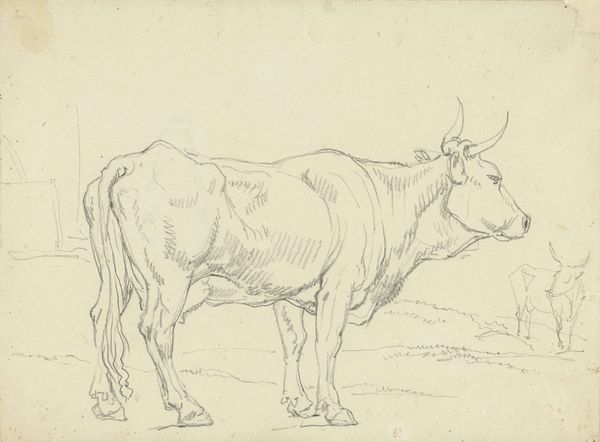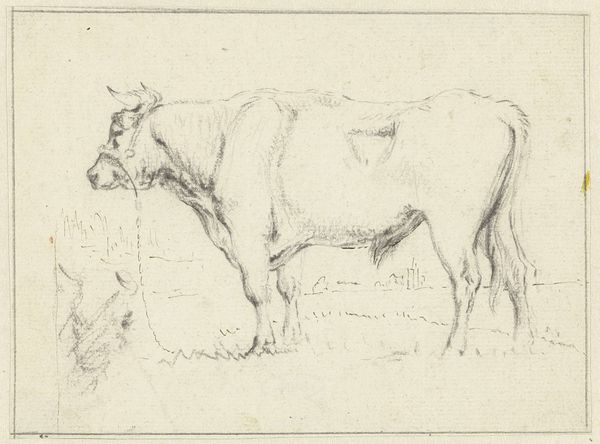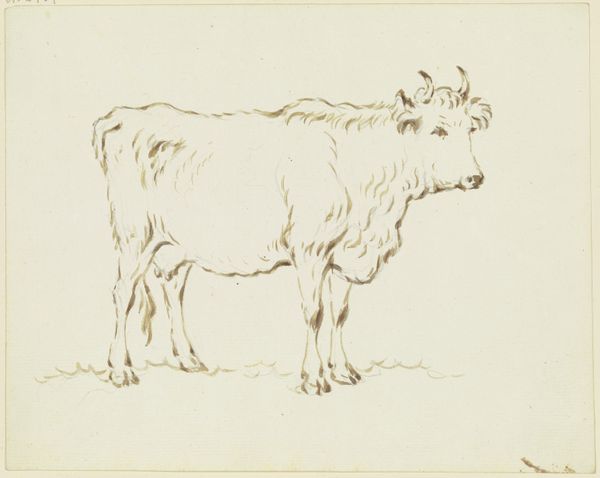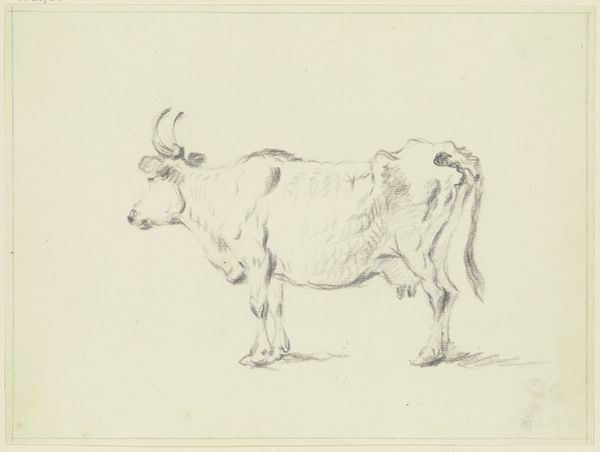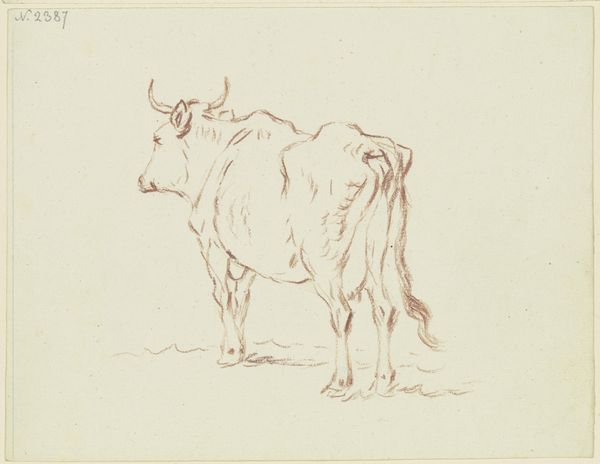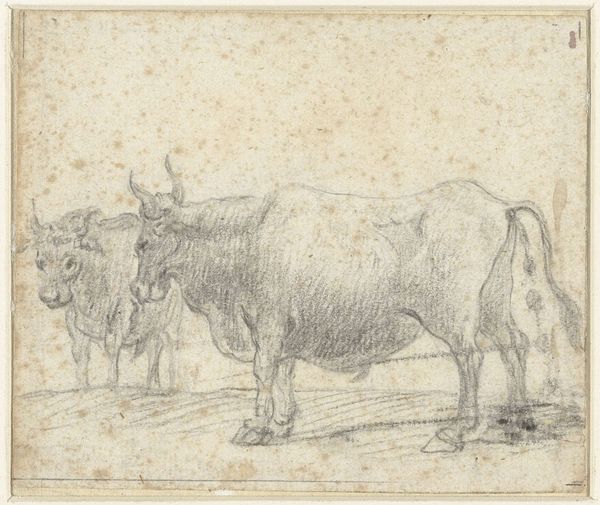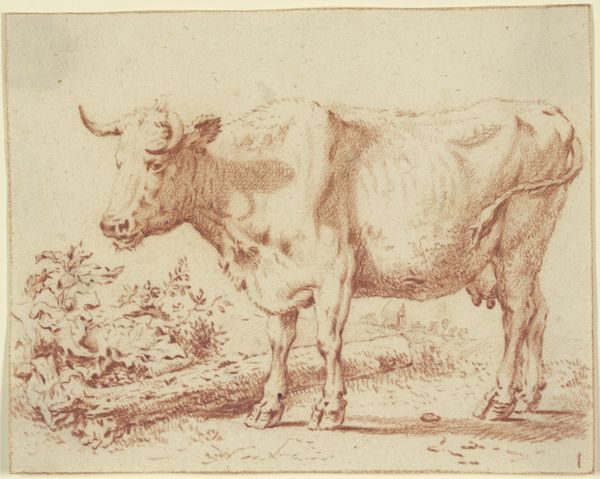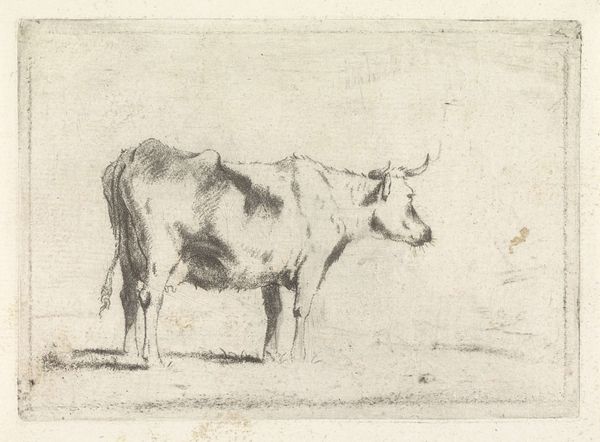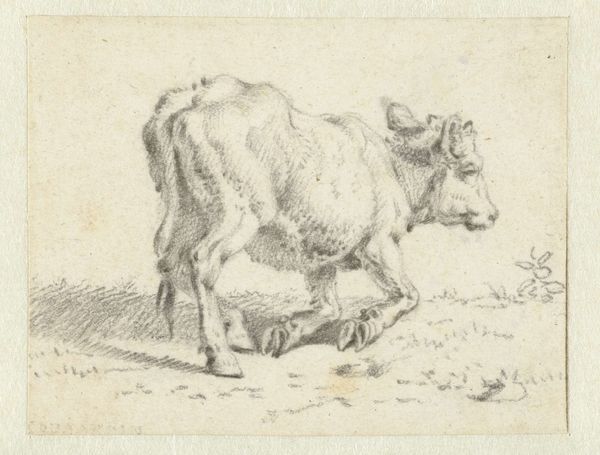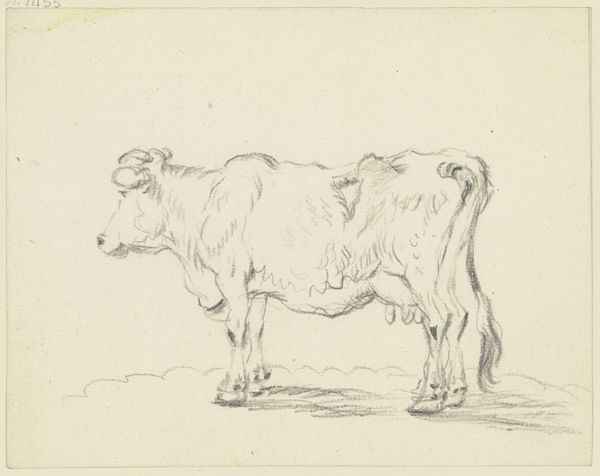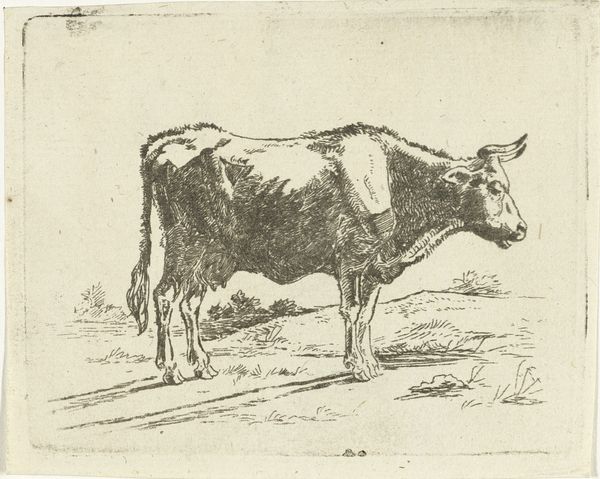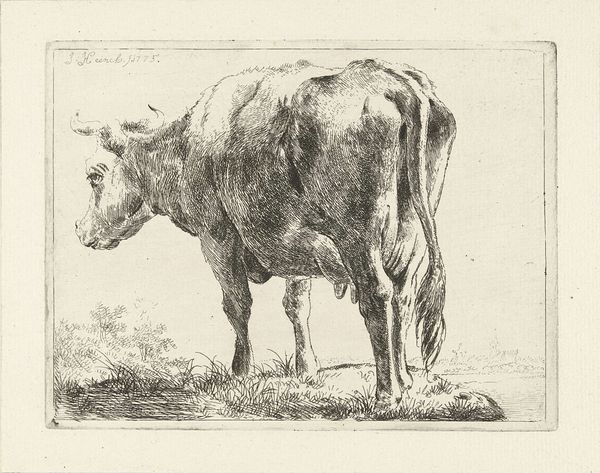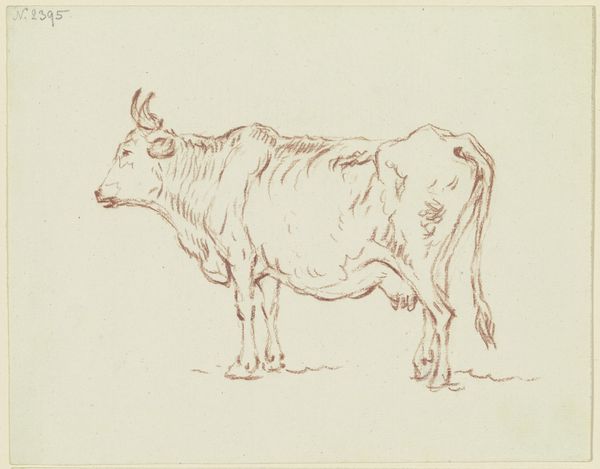
drawing, ink, pencil
#
drawing
#
amateur sketch
#
light pencil work
#
quirky sketch
#
neoclassicism
#
pencil sketch
#
incomplete sketchy
#
landscape
#
ink
#
sketchwork
#
pen-ink sketch
#
pencil
#
rough sketch
#
line
#
pencil work
#
realism
#
initial sketch
Dimensions: height 89 mm, width 108 mm
Copyright: Rijks Museum: Open Domain
Curator: Standing before us is "Ox in Shallow Water," a drawing created between 1805 and 1806 by Fréderic Théodore Faber. Editor: It's so light, almost ephemeral. The ox seems to materialize out of the shallow water itself. I'm curious, what kind of pencil did Faber use to create this effect? Curator: Faber employs both pencil and ink in this work, demonstrating a commitment to the realist style characteristic of the Neoclassical period. Notice how the meticulous line work defines the animal’s musculature and coat, focusing on representing it as a tangible, material presence. Editor: Yes, but look closely – the drawing feels less about the *specific* ox and more about the act of rendering. I'm seeing evidence of a clear interest in the process itself, in the building up of the image through repetitive, almost meditative strokes. What significance did farming or animal husbandry have in his broader social context? It surely must have some relevance to his subject matter. Curator: While a direct relationship is unclear without further biographical evidence, we can still consider the intrinsic visual structure. Faber masterfully plays with light and shadow to give form to the ox, the careful balance between line and empty space allowing for the form to both emerge and dissolve into the scene's soft edges. Editor: Precisely. And considering that paper itself, what type was available to Faber? Was this a commercially produced sheet, or something hand-prepared? It all contributes to our understanding. There seems an initial rough sketch, perhaps an initial inquiry into the subject by the artist. The economical use of lines to capture light also gives it a temporal, fleeting quality, an impression, of a passing moment. Curator: Indeed, it invites us to meditate on temporality, to see the animal not only as itself, but also as a study in form and movement. The sketch, then, acts as a symbolic moment of perception, as we see the idea manifest of how the animal walks with his muscular build on that waterbed. Editor: The very transience of the sketch forces a consideration of its physical reality as a product made with specific tools and available materials. Seeing art this way underscores its tangible history as part of an artist’s material existence, thus we see how the social relations with what an artist does relates to the form and symbolism we are looking for. Curator: Yes. We see it also with how well he made use of lines to construct this drawing with basic strokes. A remarkable glimpse into form and the potential symbolism. Editor: Definitely food for thought. I think Faber's drawing here urges a more embodied consideration of art and production as social form, it asks us to keep exploring and interpreting what materializes before us, in and beyond shallow waters.
Comments
No comments
Be the first to comment and join the conversation on the ultimate creative platform.
